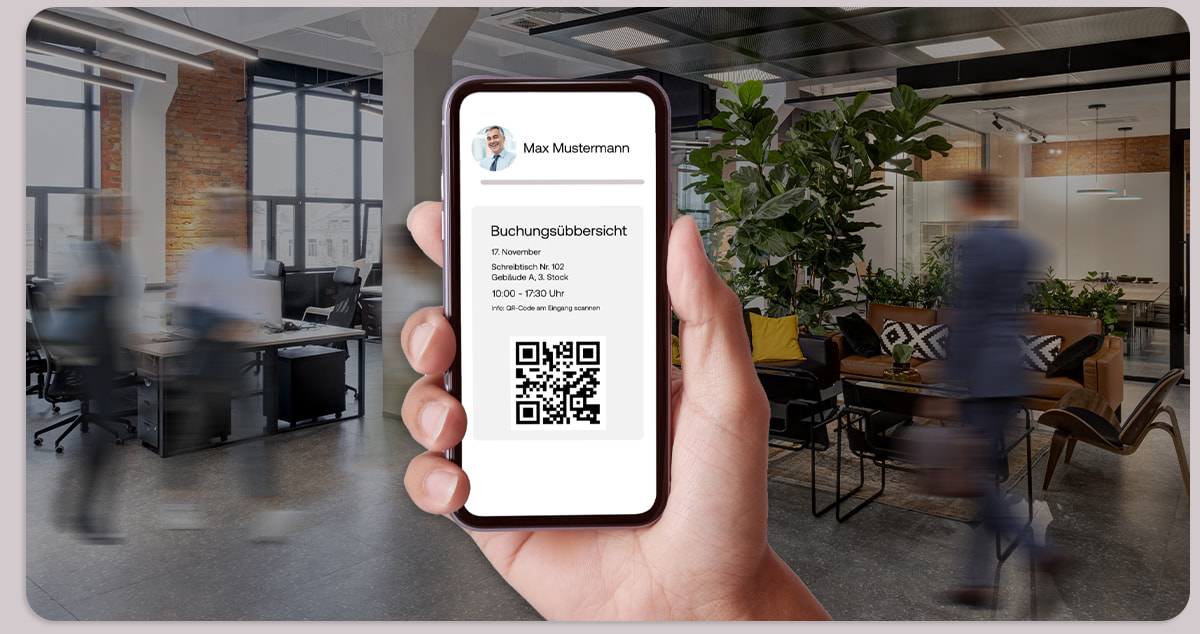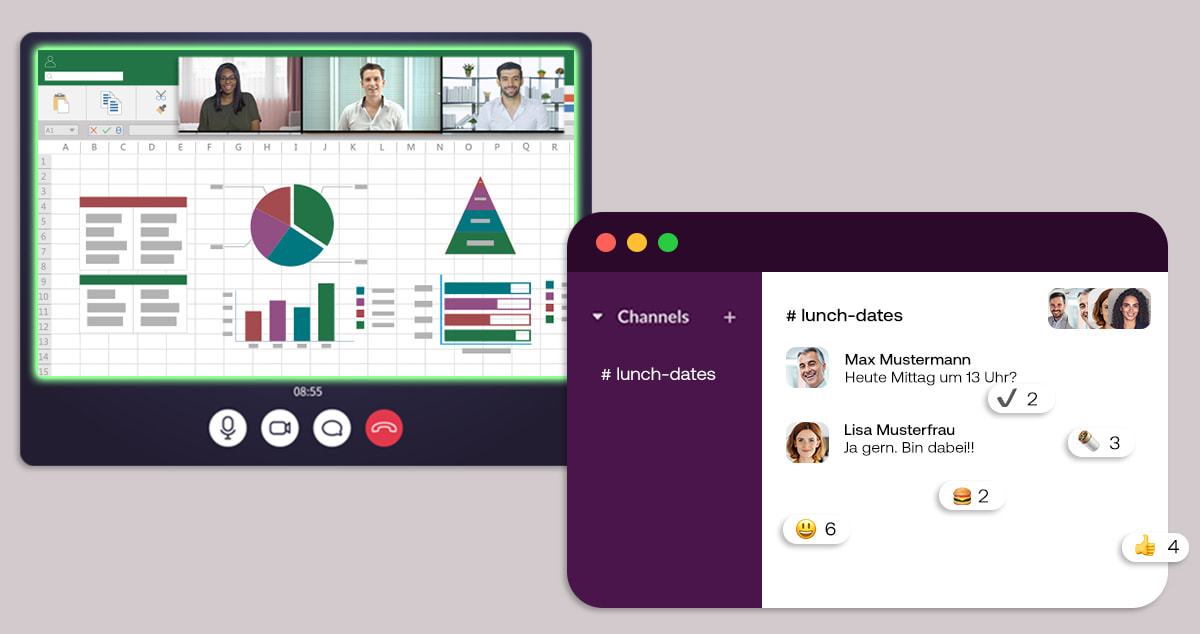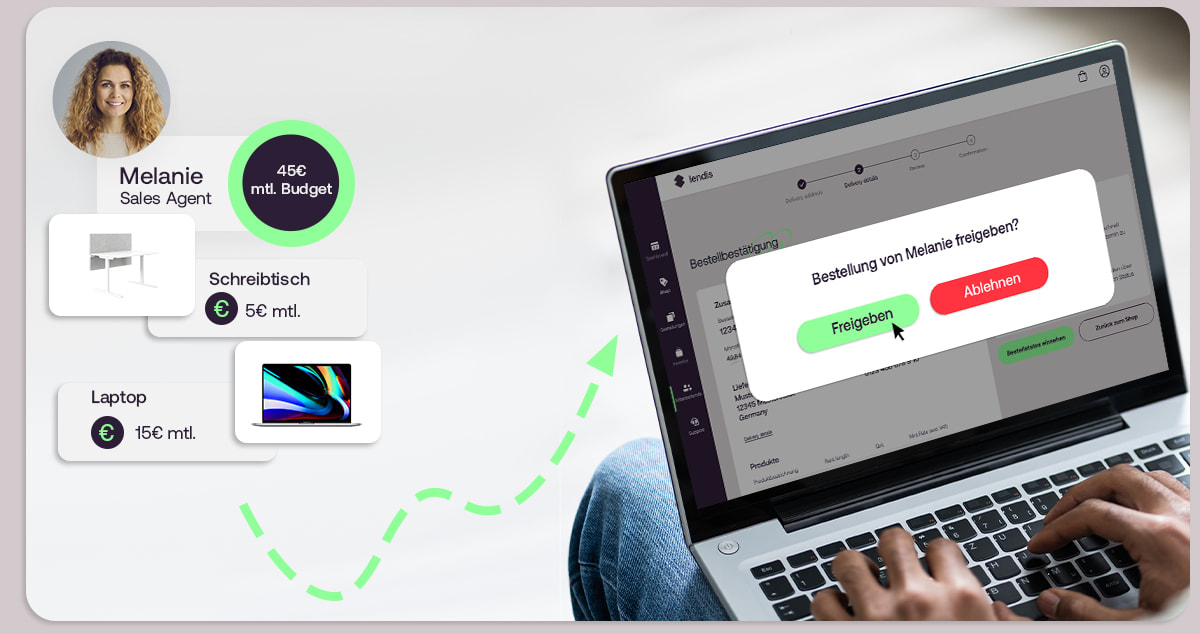Software & tools for hybrid collaboration
Hybrid workingmeans that the choice of work location and working hours is becoming increasingly flexible. The office is no longer the only place to work, 9 to 5 is no longer the standard for working hours. All of this will have a major impact on how we work together in the future.
However, software & digital workplace tools can help us to improve and simplify collaboration between employees in the office and in remote work. Here we show you which digital collaboration tools you should use to increase productivity in your company.
Desk sharing software

Many companies are already planning to switch to a desk-sharing approach in the post-coronavirus era. Instead of one workstation for each employee, this will be shared with other employees in future. This allows office space to be saved or used for other areas, such as additional conference rooms or meeting zones. However, such a concept requires appropriate organization to ensure that each employee has a workstation available when it is needed.
In addition to the management option, most solutions also offer other features, such as reporting options. This means that capacity can be allocated by day, time of day or workstation and equipment can be optimized accordingly.
Well-known providers include:
Cloud-based office solutions
Well-known providers of corresponding office solutions are:
Collaboration tools for project management
If you are no longer in the office every day to discuss ongoing projects and keep each other up to date, project management tools are a useful aid. For managers in particular, they offer an easy way to get an overview of the project status, but also to assess the workload of team members so that they can provide relief if necessary.
Communication & data exchange

Messaging tools had already secured their place in many companies before coronavirus, as they enable a simple and efficient form of communication. Chat programs can be used to ask short questions without interrupting a colleague's work and files can be sent back and forth quickly. Tool providers are also continuously working on additional functions that further simplify collaboration or allow the integration of other collaboration tools.
Video conference
The best-known providers of video conferencing software are:
Virtual offices
Virtual online offices are solutions for corporate collaboration that bring real office life to the screen. The aim is to combine the advantages of the office with those of remote work and improve digital collaboration and social interaction.
In the digital office, for example, people meet at the coffee machine or in the lounge area for a quick chat with colleagues before meeting for a brainstorming session in the conference room or going back to the workplace for focused work.
Remote onboarding

One particular difficulty, especially during the coronavirus lockdown, was onboarding new employees. With hybrid work, new colleagues will increasingly work remotely in the future. Tools offer various functions to make remote onboarding successful.
Using the Lendis OS, new employees can easily be equipped with everything they need to work productively from day one. Complete workstations with desks, office chairs and laptops can be put together and rented with just a few clicks. Lendis ensures that everything is ready for your colleagues on their first day at work.
We hope that our article has provided you with helpful software and tool recommendations that will help you and your colleagues work together even more efficiently in the future.
